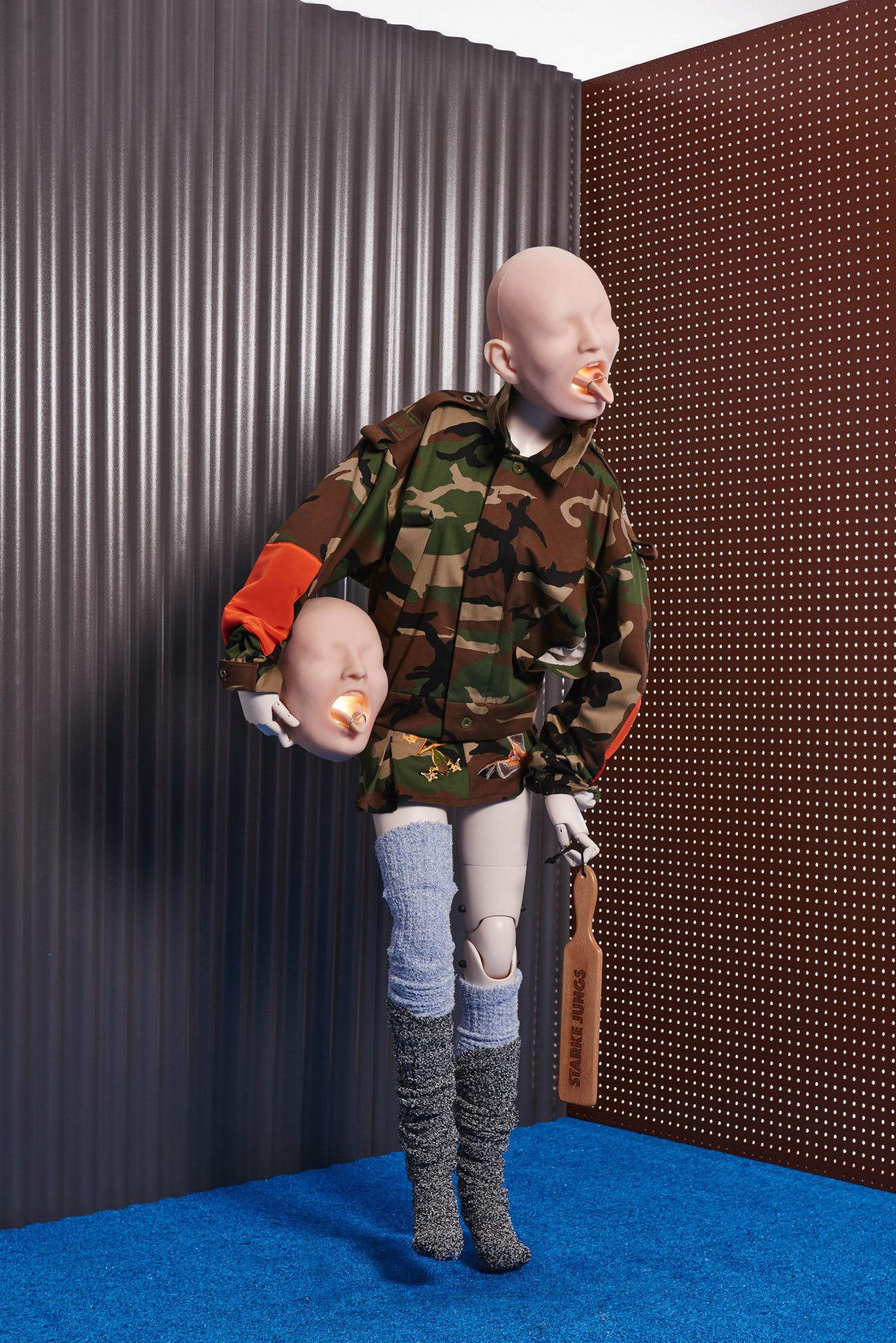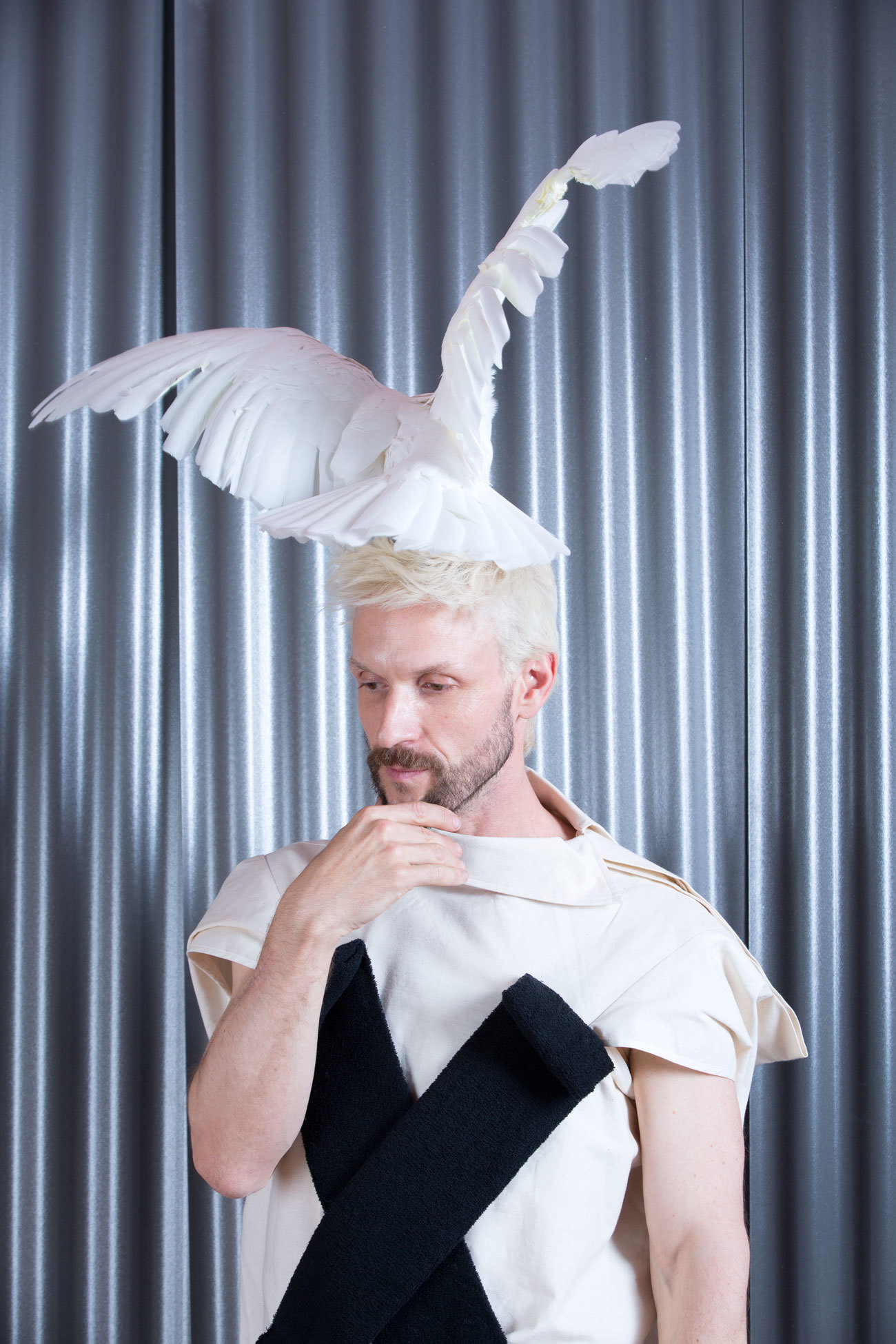Since 1999, when he premiered his first collection of clothes in Paris, Bernhard Willhelm has been “moving in-between chaos and diversity”, creating mad, colourful collections, never being scared to experiment or to play the industry clown. In his own words, freedom belongs to the fool, and only the court jester can tell the truth to the king! Wilhelm, and long-term collaborator Jutta Kraus, recently swapped their Parisian atelier for a space near the Hollywood Hills; and with Tom Ford about to show his womenswear there and Hedi Slimane based there too, it’s a good time to be in the City of Angels. After just over a year in LA, Willhelm is the subject of an exhibition at the Museum of Contemporary Art’s Pacific Design Center, where he’ll be presenting a sculptural installation with a fashion sensibility that includes video, photography and curated objects. It’s a meditation on the future of commerce, a response to the uniformity of fashion in the 21st century and a forecast of the fashion experience in the 22nd century.
You’re showing clothes, videos, photography, a whole variety of things, aren’t you?
We’re showing a new collection. It has nothing to do with the past; it’s a very forward-looking exhibition. The title, When Fashion Shows The Danger Then Fashion Is The Danger, is talking about consumerism, in terms of fashion, in terms of what fashion and art could be, sexuality and fashion. The work is a pattern experiment in an abstract way and not really based on a story. It’s based on shapes and form. You’ll see mannequins with clothes, film, and images. And also in the museum shop, there’s a selection of clothes, accessories, t-shirts, sexy Lycra clothes and some spanking paddles. It’s a funny selection of kinkiness from the Bernhard Willhelm world.

So are you questioning the uniformity of consumerism, rather than consumerism itself?
Yeah especially in America – as a European – it’s shocking that at a very young age you are already educated how to consume and what to consume. For example the American Girl doll, you can customise it according to your creativity, but if you look at it, it looks like the perfect Stepford Wife. There are all these scary elements in that culture of being mainstream already at 5 or 10 years old. Here in LA already there are homosexuals, who are supposed to be different, but they’re probably the most mainstream homosexuals I have ever seen. It’s interesting that nobody questions anything.
So the lack of creativity in consumption bothers you.
Yeah, it’s the question why everybody wants to have the same things, like Abercrombie and Fitch and Starbucks. People are very happy to submit themselves to conformity. It’s also an interesting thing that Christian Dior in the 40s and 50s, after the war, brought out the New Look – which goes back to the 18th century – so that you put a woman in a corset and she’s basically the object of a man. It’s shocking how easily women accepted that role. And now if you look at Hollywood glamour – like the Oscars – there are still these looks going back to that period that will be on the red carpet. On the one hand it’s the strong working woman; on the other hand it’s the woman that wants to be object like a dress up doll.
You’re certainly not conforming in one of the promo photos for the MOCA show. You’re in some popper-fronted blue rubber underpants.
I’m not the only gay in the village! I like rubber at the moment. It’s good to explore your feminine side, like Bruce Jenner, and it’s good to show a different way of a designer presenting his own image, because I think the last 10 years, everybody has been playing it so safe.
I like your idea about the freedom you get in playing the fool. You’ve said that it’s only the clown who can tell the truth to the king.
Beauty is truth, but the truth itself can be ugly, and if you give that ugly truth a little bit of humour, then you will get close to Bernhard Willhelm. The world needs humour, and now more than ever. I still have my office in Paris, and what’s happened in Paris with Charlie Hebdo, was also a lack of humour, and based on misunderstanding. It’s not possible that you would kill each other for having different opinions.
What age were you when you decided that this would be your way of expressing yourself?
I would say since the beginning, or at uni, there was this kind of challenge with our sexuality, to experiment. But you have to see that the other part of the life is that it’s a lot of work. We start at 9 or 10 o’clock and then we start working until 7, 8, 9 o’clock. It looks like fun and games, but it’s actually a lot of work as well.

Helmut Lang is another designer who has turned to the art world. Do you have any connection with him?
Without Helmut Lang there would be no Céline, no Raf. He did it good – he sold his company for money, and now of course he has a foundation, and he doesn’t really have to work anymore, so he’s in a very luxurious position. I’ve heard from people working at different fashion houses that there is always a Helmut Lang piece hanging and it’s right there to be copied.
But what do you think of his art?
He and Hedi are part of a certain art crowd. I don’t want to judge if it worked or not. It was just fine, you know?
You now have 3000 at the end of your name now. Is that just a futuristic number, or are you now related to Andre 3000?
Well I’m a big fan of Andre 3000. I want to dress him for the Oscars.
When Fashion Shows The Danger Then Fashion Is The Danger, Bernhard Willhelm and Jutta Kraus. 3000. 7th February – 17th May. MOCA Pacific Design Center.
Credits
Text Stuart Brumfitt
Portrait Daniel Trese
Photography Josh Paul Thomas
